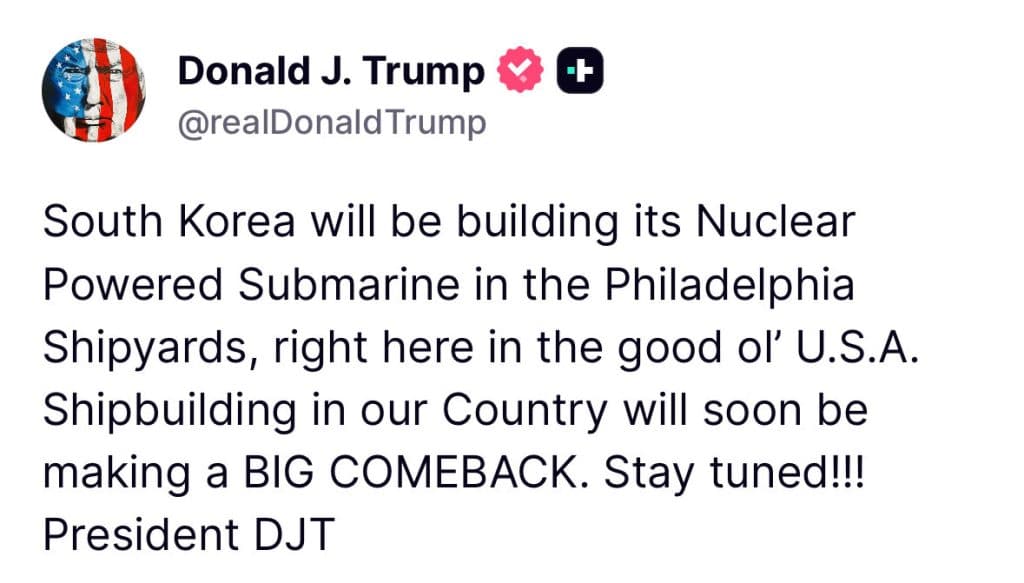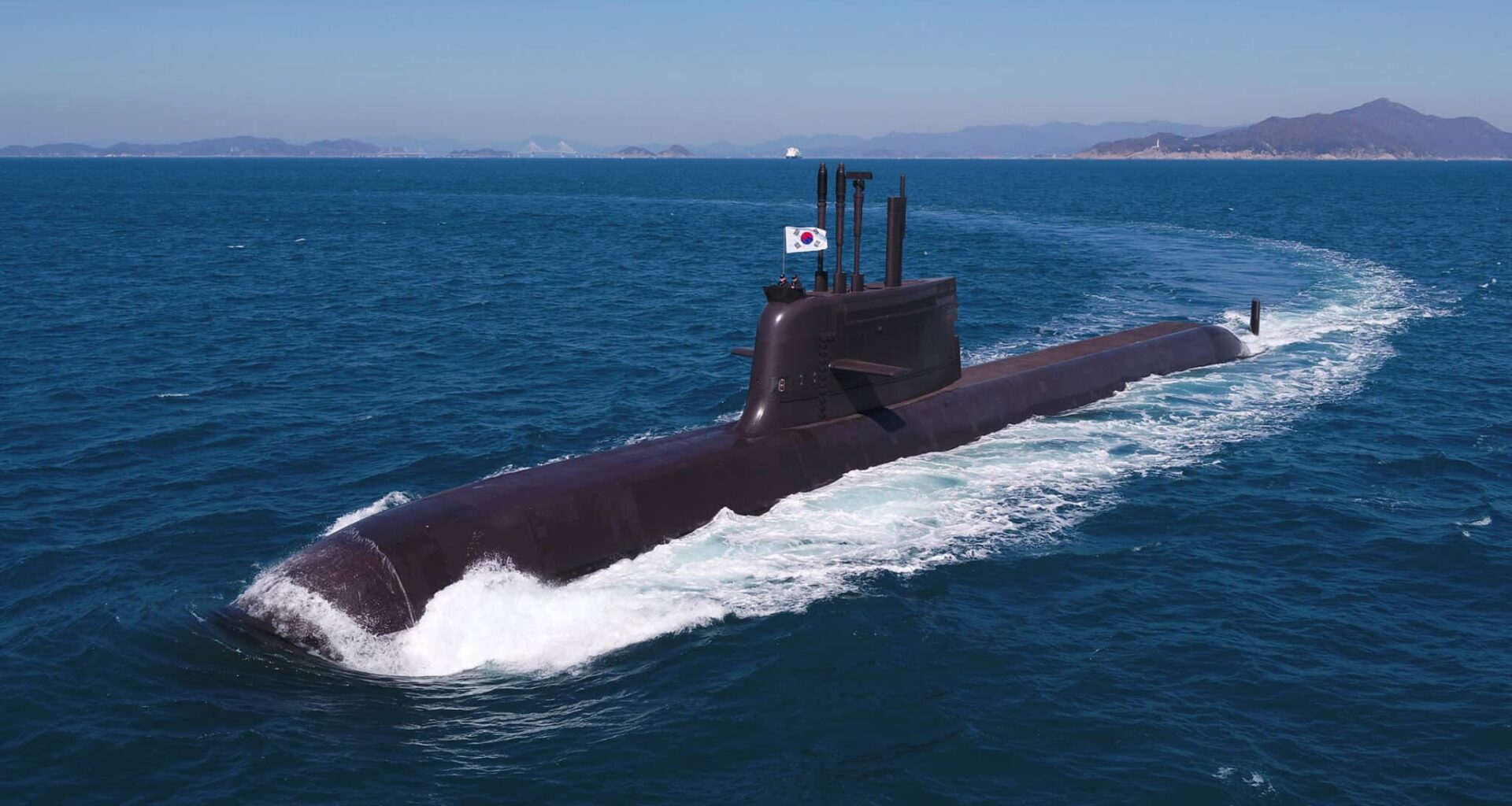Revealed on October 29th, U.S President Donald Trump has announced that the U.S government has given the go ahead for South Korea to build Nuclear Submarines on U.S soil.
Story by Ethan Gossrow, additional reporting by Eunhyuk Cha.
The announcement came following a meeting with various Asian heads of state including South Korean President Lee Jae-Myung in Gyeongju, South Korea. Additional posts by Trump on Truth Social have detailed that the Submarines will be built on U.S soil at the Philadelphia shipyards, which were acquired by the Korean defense firm Hanwha late in 2024.

Screenshot of an announcement made by President Trump stating that South Korean Nuclear submarines will be built in the United States.
Subsequently, the construction of Nuclear submarines marks a departure from past efforts, as previous South Korean submarine construction has focused primarily on conventionally powered submarines. In tandem with this, South Korean Nuclear Submarine construction projects have remained in limbo for sometime as the U.S had not given tacit approval until President Trump’s statement.
“Our (U.S and South Korea’s) military alliance is stronger than ever before, and based on that, I have given them approval to build a Nuclear Powered Submarine.”
United States President Donald Trump via Truth Social Post
However, as the Philadelphia Shipyards where construction will take place is not currently equipped to handle the construction of Nuclear Submarines (only commercial vessels have been produced), Hanwha has reportedly invested an additional $5 billion dollars into modernization and preparation. Despite this, there has been a lack of a concrete agreement regarding the development of the shipyards and a plan for the construction of the submarines with no official signature from the South Korean side.
These agreements are the conclusion of a long standing desire for nuclear powered submarines expressed by the South Korean government and military. Naval News has previously reported that subsequent efforts for a Nuclear Submarines have been born of increasingly intense operational needs for endurance and a deterrent towards neighboring nations such as North Korea, China, and Russia.
At the National Assembly’s Defense Committee audit on the 30th, Chief of Naval Operations Kang Dong-gil stated, “The start date for the nuclear-powered submarine program has not yet been decided, but once it begins, it will take more than 10 years,” adding, “Its displacement is expected to exceed 5,000 tons.”
Defense Acquisition Program Administration (DAPA) Commissioner Seok Jong-geon also stated, “Looking at advanced countries’ cases, it generally takes about 10 years to build a nuclear-powered submarine,” adding, “If we combine our capabilities, it could be somewhat shortened.”
Minister of National Defense Ahn Kyu-baek, when asked about the scale of the planned nuclear-powered submarine acquisition, replied, “It will need to be discussed with the Navy, but I think at least four submarines would be necessary.”
Potential Design and Past Experiences

Click to Enlarge. Cutaway of the KSS-III (Dosan Ahn Changho class) submarine’s design.
Currently, South Korea operates 3 classes of conventionally powered submarines, the Jang Bogo-Class (KSS-I), Sohn Wonyil-Class (KSS-II), and Dosan Ahn Changho-class (KSS-III). KSS-I and KSS-II submarines are Korean manufactured derivatives of the German Type 209 and Type 214 designs, numbering 9 boats per class in ROKN service.
KSS-III is the latest submarine design to enter service, with the class being the first fully indigenous design to be produced. There are currently 3 batch 1 KSS-III submarines in service, with the first of the batch 2 boats launched a week ago.
Accordingly, KSS-III offers a significant capability jump over past South Korean submarines, sporting an improved power plant, better sonar, new torpedoes, and the addition of K-VLS cells for more strike options with batch 1 and 2 carrying 6 and 10 K-VLS cells respectively. These improvements are allowed through a greater tonnage, rising to 3,750 tones submerged for batch 1 boats with batch 2 boats expected to be even heavier.
Given it’s modernity and Korean architecture, KSS-III has previously been eyed for a potential upgrade from it’s conventional Diesel Electric/Air Independent Propulsion power plant to a nuclear reactor. Naval News has previously reported on the concept, with the sub offering vastly increased endurance, power generation capabilities, and speed over it’s conventionally powered brethren.
